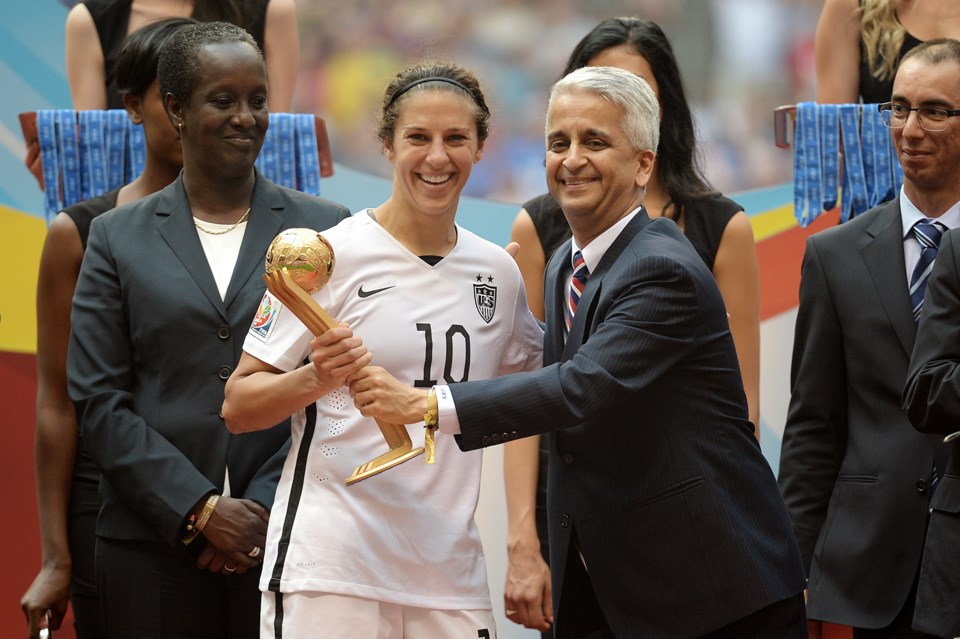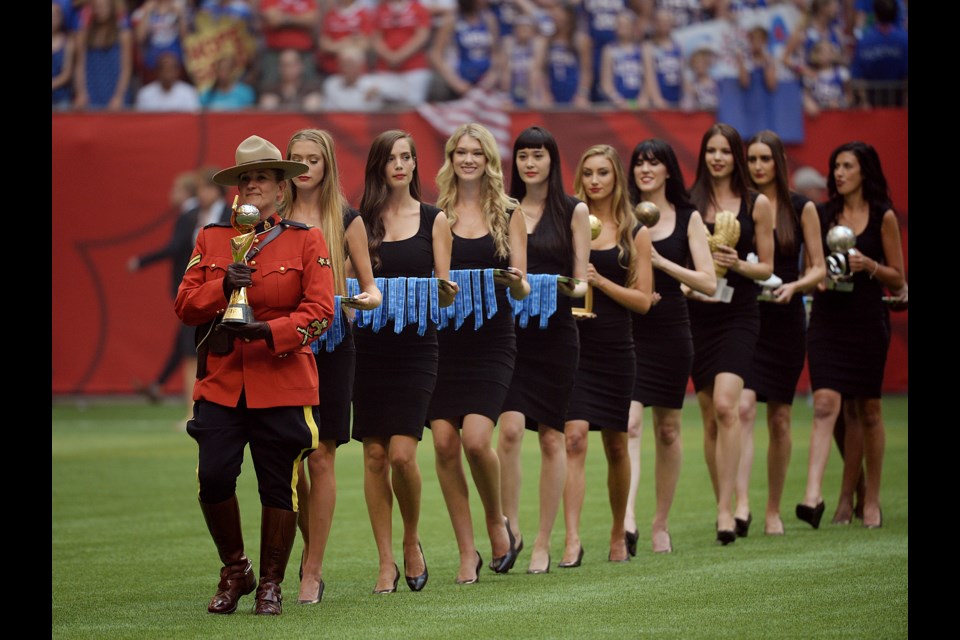My friend was recently watching sports highlights with her daughter when the toddler looked at her mom and asked, “Where are all the girls?”
At three years old, this little sports fan could see what was missing. She was smart enough to ask. She’s smart enough to grasp the discrimination and internalize the absence of people on T.V. who look like her and her mom.
This is why — as much as players, coaches and most of the people involved with women’s sport wish it were otherwise — the Women’s World Cup is still political. The tournament has earned its clout in spite of the double standards every match.
U.S. midfielder Carli Lloyd scored one of the most cunning and audacious goals in the sport’s history by knocking in a shot from the half-way line to notch a hat trick against Japan and win the World Cup this weekend at B.C. Place. But even in praising her, the president of the U.S. Soccer Federation bungled his compliment. “Carli’s performance,” he said, “was as good as any performance in a World Cup Final by any man or female.”

A man is a man, but a woman is a female. Used like this, the word is dehumanizing, but let’s appreciate the applause because in Brazil no one is honouring that country’s superstars. Instead, Marta is still — heartbreakingly — mocked by some, ignored by most and has to put up with ludicrous excuses from her own nation’s representatives who tsk tsk’ed players they claimed lacked “a spirit of elegance, femininity” but cheer those who wear tighter shorts and do their hair. See, my heart breaks. There was no coverage in Brazil after she scored her record 15th World Cup goal, but there was a front-page spread on a friendly between the seleçao and Honduras. More heartbreak.
Despite the record growth of the tournament — 52 soccer matches played by 24 teams over 30 days — it still has the distinction of happening on artificial turf. The plastic was sometimes so hot, players were dousing their feet in water and opting for boots that were any colour but black. More than 40 of them sued FIFA and the host Canadian Soccer Association, but neither would budge.
This disgrace will be borne indefinitely by executives Peter Montopoli and Victor Montagliani, who also have the distinction during this tournament of snubbing the pioneers who once played for Canada when they had no uniforms of their own but dressed in borrowed boys jerseys. Veterans Andrea Neil, Tracy David and others should have been prominent and celebrated by the hosts. Instead, very few Canadians know their names and this is a terrible shame. Christine Sinclair, an icon for millions, had those women as her role models.
Add to this the fact that the U.S. team received $2 million for winning the Cup. Contrast that to the $35 million the German team received for winning the men’s event last year.
This disparity is changing. In the meantime, the leaders of the Canadian Soccer Association are hinting the National Women’s Soccer League may expand in this country from two teams in Quebec to … more? Join me in crossing your fingers.
This is exactly what is needed to capitalize on the attention, interest and investment that has poured into Canada for the World Cup.
The amount of broadcast coverage dedicated to women’s sports, in the U.S. at least, has not increased in 25 years and it still hovers around two per cent, a drop from five per cent in 1989, according to a long-term study by the University of Southern California. A quarter-century of stagnation was blown aside to make way for the FIFA Women’s World Cup, at least temporarily. The question has always been rather chicken and egg: would investment in professional women’s leagues increase if the media paid more attention? Or will the media pay attention once there are leagues to cover? Audiences are saying they will watch.
In 1999, when the U.S. hosted and won the World Cup, 1.1 million people attended matches at stadiums much bigger than ours. This summer, ticket sales jumped to 1.35 million, and more than half of all Canadian girls aged two to 17 watched the World Cup, an increase from one in three in 2011. Women’s World Cup audience records were set for both national languages in this country as well as in the U.S., France, Japan, Australia, China, Korea, Norway and, yes, even in Brazil.
And in my friend’s home, a three-year-old girl watched people like her playing sports on television.
mstewart@vancourier.com
@mhstewart



